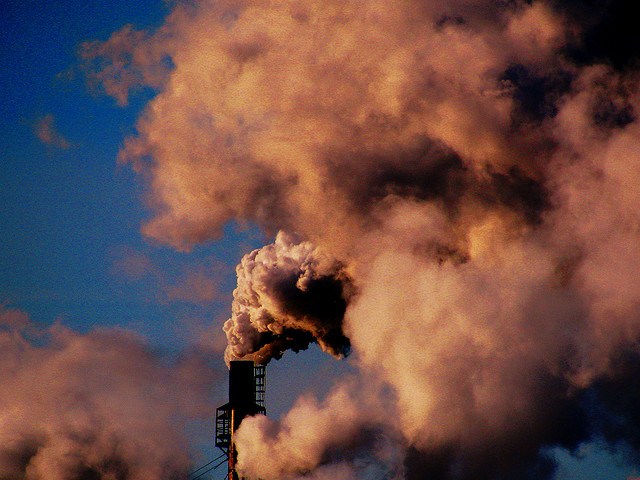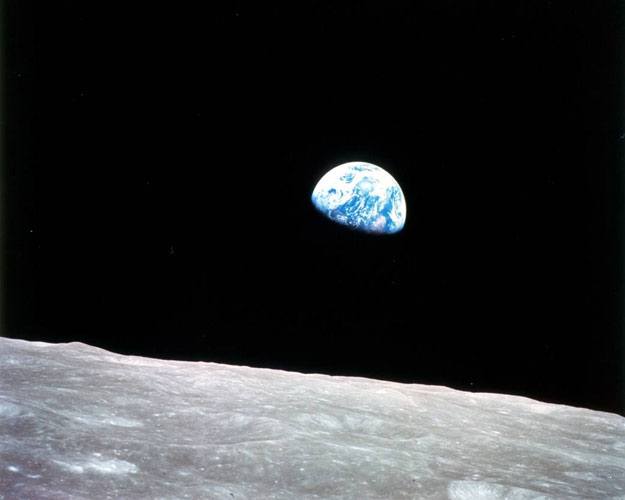The enhanced greenhouse effect
Expert reviewers
Essentials
- The sun emits shortwave radiation, which passes through Earth's atmosphere and is absorbed by Earth's surface
- Some energy is re-emitted back into the atmosphere, as longwave radiation
- 'Greenhouse' gases: carbon dioxide, nitrous oxide, methane, water vapour effectively prevent some of this longwave radiation from leaving the atmosphere
- This warms Earth's atmosphere, making our planet habitable
- Human activities have led to a build up of extra greenhouse gases in the atmsophere
- As a result, average surface temperatures are rising
- Temperatures will continue to rise if greenhouse gases keep building up in the atmosphere
Without the greenhouse effect we would be living in a very chilly place—the world's average temperature would be minus 18°C, instead of the 15°C we are used to. So what is the greenhouse effect, and how does it make Earth around 33°C warmer?
The natural greenhouse effect
The natural greenhouse effect is a phenomenon caused by gases naturally present in the atmosphere that affect the behaviour of the heat energy radiated by the sun. In simple terms, sunlight (shortwave radiation) passes through the atmosphere, and is absorbed by Earth’s surface. This warms Earth’s surface, and then Earth radiates some of this energy (as infrared, or longwave radiation) back towards space. As it passes through the atmosphere, gases such as (water vapour, carbon dioxide, methane and nitrous oxide absorb most of the energy. The energy is then re-emitted in all directions, so some energy escapes into space, but less than would have escaped if the atmosphere and its greenhouse gases weren’t there. The result is that some of the sun's energy becomes ‘trapped’—making the lower part of the atmosphere, and Earth, warmer than it would be otherwise.
This process is known as the greenhouse effect because it is similar to how a greenhouse works the sun’s energy passes through the glass (or similar) panes of the greenhouse, but not all of it is allowed to escape again, making the inside of the greenhouse a warmer and more hospitable environment for the plants inside.
Earth’s energy balance
The rate at which energy is absorbed by Earth is approximately balanced by the rate at which it is emitted back into space, keeping the Earth in what’s known as a state of equilibrium, and at a stable temperature. As long as the amount of greenhouse gases in the air stays the same, and the rate of energy arriving from the sun is constant, this equilibrium is maintained. In the state of equilibrium that existed during the centuries up until Industrial Revolution, which started in the late 1700s, the natural greenhouse effect maintained the average temperature of Earth’s surface at around 15°C.

The composition of the atmosphere is changing
Earth's atmosphere is made up of 78 per cent nitrogen and 21 per cent oxygen. Only about 1 per cent is made up of natural greenhouse gases, but this comparatively small amount of gas makes a big difference. The Industrial Revolution brought new industrial processes, an increase in the burning of fossil fuels, more extensive agriculture, and a rapid increase in the world's population. This rapid increase in human activity led to the (still ongoing) emission of significant amounts of greenhouse gases into the atmosphere. We know this because of measurements made over the past 50 years and the analysis of air bubbles trapped in ancient ice, which show that levels of carbon dioxide, methane, nitrous oxide and halocarbons are increasing.
Although Earth’s atmosphere has changed significantly over geological time, and high concentrations of greenhouse gases have been present in Earth’s atmosphere in the past, never before has Earth been subjected to such a large increase in the amount of greenhouse gases in the atmosphere over such a short time. Although over a geological timeframe (thousands to millions of years), life on Earth would be able to gradually adapt to the increased concentrations of greenhouse gases, the comparative equilibrium that has existed for the past 10,000 years or so is being disturbed at such a rapid rate that adaptation might not be possible.
Note that the figures above use a compilation of both instrumental and proxy data.
The enhanced greenhouse effect and climate change
The disruption to Earth’s climate equilibrium caused by the increased concentrations of greenhouse gases has led to an increase in the global average surface temperatures. This process is called the enhanced greenhouse effect.
While scientists agree that the levels of greenhouse gases and average global temperatures are rising, there is less certainty about what the future consequences will be. To help understand this, scientists use mathematical models. These models take account of many processes that together determine the behaviour of the atmosphere (eg, temperature, humidity, wind speed and atmospheric pressure).
The models indicate Earth’s surface will get warmer. This will have serious knock-on effects, such as changes in global rainfall, ocean circulation and extreme weather events, and an increase in sea level. These changes will have further consequences for global agriculture, biodiversity and human health. Putting a precise timeframe upon Earth’s responses to the increased levels of greenhouse gases in the atmosphere is difficult, but it’s clear that recent observations are starting to confirm the predictions of a warming planet.
Average global temperature has risen by around 0.7°C since the early 20th century. This may not sound like much, but some regions will experience a much more extreme response than the global average. More importantly, even a small but permanent increase in temperature can have a significant impact upon large scale environmental features like ice sheets or forest cover in the long run. Extreme events, which already push the boundaries of ecosystems’ tolerance, will push even harder.
Arctic ice extent, snow cover and glacier volumes have decreased and sea level is rising. Surface ocean temperatures have increased. Warmer ocean temperatures will affect marine ecosystems and can place stress upon coral reefs. Furthermore, the increased CO2 in the atmosphere has also led to an increase of CO2 absorbed by the ocean. This has changed the chemistry of the surface ocean, a process known as ocean acidification, and it can lead to a whole host of other problems for marine life.
Predicting the future is difficult
While the basic physics of the greenhouse effect is reasonably well understood, predicting the future course of events is made difficult because of our limited knowledge about future greenhouse gas emissions and the detailed behaviour of the atmosphere and oceans. The climate system is extremely complicated, with many inter-connected ‘feed-back’ processes at work which can either magnify or reduce the original effect.
A national and international issue
An increase in global temperature would bring changes to the entire planet, and therefore to every nation. This makes it an international issue which needs worldwide study and responses. Australia’s contribution to global CO2 emissions in 2012 was only around 1 per cent, but our per capita CO2 production puts us among the top of the OECD countries.
Australia and over 150 other countries signed the United Nations Framework Convention on Climate Change at the United Nations Conference on Environment and Development held in Rio de Janeiro in 1992. Since this meeting, governments have met regularly to discuss action to avert extreme climate change.
However, the highly contentious political and economic nature of climate change issues has meant that little global progress has been made in reducing emissions of greenhouse gases. Earth’s climate system doesn’t take much notice of political debates, and atmospheric greenhouse gas levels have continued to rise. Before the Industrial Revolution, atmospheric levels of CO2 were around 280 parts per million. In 2013, the Mauna Loa observatory in Hawaii, which has been measuring atmospheric CO2 levels since 1958, recorded the milestone value of 400 parts per million of CO2 in the atmosphere, a level not seen since around 35 million years ago. Earth was a very different place then – average global temperatures were around 34°C higher and sea level was around 540 metres higher. There were certainly no humans around; woolly mammoths and other giant mammals roamed the planet.
The above chart shows CO2 emissions per person (in metric tons of carbon) from fossil-fuel burning, cement production and gas flaring activities in 2010. Data source: Carbon Dioxide Information Analysis Center.Global emissions per capita
Australian scientists
Australian scientists are working on many aspects of the greenhouse effect. Some scientists try to determine climatic trends, or model the effect of the enhanced greenhouse effect on Australia's climate and economy. Others work on the Antarctic ice cap, to see what impact the enhanced greenhouse effect may be having there. A number of Australian scientists have contributed to the World Climate Research Programme, and the development of the Intergovernmental Panel on Climate Change Assessment Reports. All this is part of a worldwide attempt to better understand the enhanced greenhouse effect and climate change and to decide what can be done about it.






